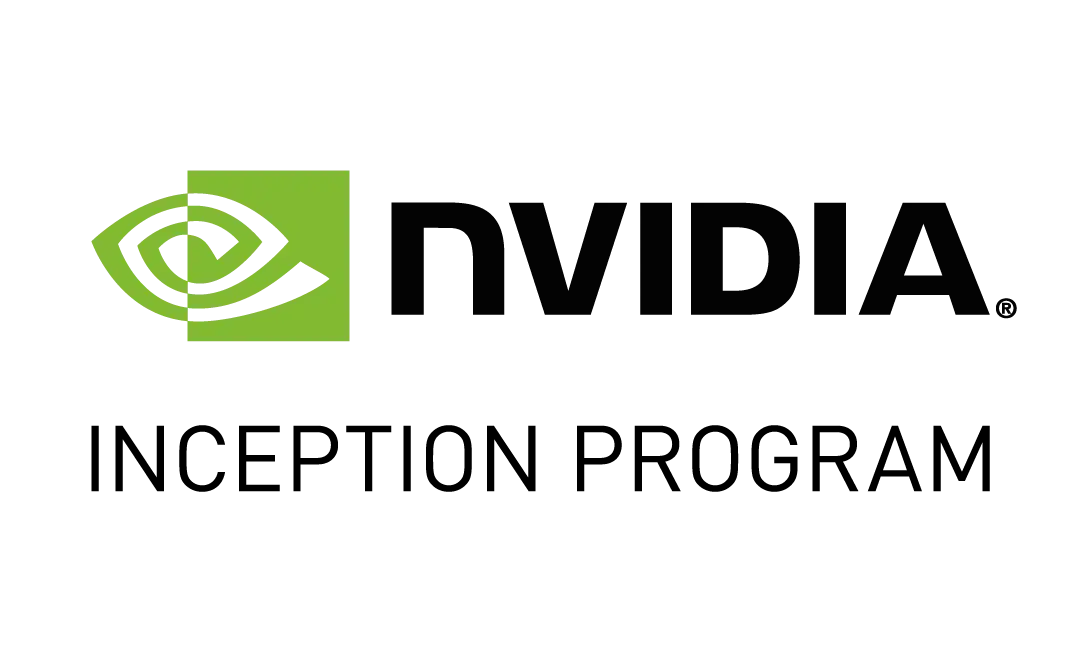Many educational institutions rushed online exams during the pandemic, only to find out the harsh reality that up to 60% of candidates confess to cheating on at least one remote test.
As universities, certification bodies, and fast-growing businesses transition assessments online, remote proctoring has become the go-to method to maintain test integrity without requiring individuals to attend a physical exam hall.
Remote proctoring is a combination of online proctoring, with the real-time monitoring of the exam, and AI proctoring. Platforms like Testlify have these security measures built into the flow of their assessments so that all scores are accurate and without logistical headaches.
In this blog, we’ll explore how remote proctoring works and the various models available.
What is remote proctoring?
Remote proctoring is the practice of supervising online exams through webcams, screen-sharing, and browser-lockdown tools, allowing proctors (human, AI, or both) to verify identity and preserve test integrity without the test-taker ever entering a physical exam hall.
In simple terms, it turns the old-school invigilator into a secure web service. Because everything happens online, universities, certification bodies, and employers can administer high-stakes examinations to thousands of candidates worldwide.
In short, remote exam invigilation blends technology and human oversight to deliver fair testing.
Remote proctoring vs traditional proctoring
Think of the difference like going to a testing centre versus taking an exam from your kitchen table.
Traditional proctoring involved a physical room, paper materials, and an invigilator observing each candidate’s move closely.
In contrast, remote proctoring transfers these safeguards to an online environment: webcam video, browser lockdown, and real-time exam monitoring powered by AI.
Both aim for solid test integrity, but they handle cost, scale, and convenience in very different ways. Let’s compare them side by side.
| Aspect | Test-Centre / Paper-Based | Remote Proctoring |
| Average cost per exam | US$15–30+ (venue, staff, materials) | Routinely US$10–25 with AI monitoring |
| Location & scheduling | Candidates travel; fixed slots | 24/7 availability, take the exam anywhere |
| Scale | Limited by seats & proctor head-count | Automated proctoring lets one reviewer audit hundreds of sessions |
| Security tools | Physical checks, in-person watch | Browser lockdown, screen sharing, AI proctoring, dual-camera proctoring, real-time flags |
| Identity verification | Manual ID check at the desk | Photo ID, biometric facial recognition, and keystroke match |
| Exam monitoring style | One proctor per ~25 students | Mix of live proctoring and AI; alerts escalate only if needed |
| Data trail | Paper incident log | Time-stamped video, screen, and audio evidence stored in a secure test environment |
| Candidate experience | Travel stress, rigid slots | Familiar device, fewer logistics, lower anxiety for many test-takers |
How does remote proctoring work?
The remote proctoring system, as a four-layer security guard, converts any laptop into a virtual examination hall:

Platforms like Testlify incorporate these four layers directly into their evaluations: the test begins, the IDs are verified, the webcam and secondary camera scan the room, and an AI engine silently records behavior in the background.
1. Pre-check: “Are you who you say you are?”
The instant a candidate clicks Start, Testlify triggers a swift device scan to be sure the test environment won’t glitch mid-exam.
Now the candidate moves ahead onto identity verification: upon photo-ID details, the system begins live-face recognition.

Our face detection and snapshot proctoring features keep taking time-stamped pictures, so if someone tries a seat swap, the system raises a red flag.

2. Browser lockdown
Once verified, the screen snaps into mandatory full-screen. Testlify’s lockdown browser, tab proctoring, and copy/paste tracking tag every attempt to open other websites, tab or application.

If a candidate exits full-screen while an ongoing test, a friendly warning pops up; repeat offenders hit the violation limit you can set in standard, strict, or custom mode.
3. Live / AI monitoring
The AI proctoring system can flag behaviors like looking away from the screen, muting the mic, and suspicious typing patterns.

Need a human to keep watch? With dual-camera proctoring (laptop and phone), you get a full view of the room, while screen sharing and session recording capture everything for review later.

Turn on live proctoring so one proctor can monitor several tests at once and step in only when the AI flags something unusual.
4. Post-exam audit
The candidate sees the confirmation screen once the timer reaches zero. In the recruiter dashboard, you can see question-level activity logs, IPs, and video clips that show precisely when a tab switch or a second face appears.

All evidence is neatly compiled in one report, eliminating the need for extra downloads and raw file digging.
Types of remote proctoring
There are four options available if you choose to take a remote proctoring test.
1. Live proctoring
Using a webcam and shared screen, a human proctor observes the session in real-time, much like they would if they were seated at the back of a real hall. They can immediately flag misconduct, pause the test, or have a conversation with the test-taker.
It works best for oral components, high-stakes exams, or small cohorts that require a personalized approach.
2. Automated proctoring
All exam monitoring is managed by AI, including browser lockdown notifications, gaze tracking, and facial recognition checks. Only the flagged clips are later reviewed by the human proctors.
This model currently accounts for 40% of the online proctoring market in the United States (2024). It works best for corporate upskilling or large certification exams where volume outperforms human oversight.
3. Record and review
The platform records video, audio, and screen sharing, but no one watches live. Human reviewers audit the footage later, often at a playback speed of 5 to 10 times the original. It stands out for mid-stakes courses or programs with limited budgets that still want human validation.
4. Hybrid (Live & AI)
AI flags issues in real-time while a human proctor monitors multiple feeds, stepping in only when necessary.
Platforms like Testlify integrate this flow, combining dual-camera proctoring for room coverage with instant risk scores, so a single proctor can safely oversee dozens of exams without missing a cue.

Who uses remote proctoring and why?
Exam invigilation via remote means has expanded well beyond the classroom. Online proctoring is now used by a variety of organizations to balance convenience, security, and scale:
| User Group | Why They Rely on Remote Proctoring |
| Universities & Colleges | Maintain the degree value, as 65% of institutions now administer at least one major exam online. |
| Professional Certification Bodies | Candidate demand for flexible testing increased remote sittings by 58% in IT, finance, and healthcare exams. |
| Corporate L&D Teams | 48% of training programs assess staff skills remotely, reducing travel costs and accelerating results. |
| Licensing & Government Boards | High-stakes credentials (such as nursing and law) require airtight test integrity across regions. |
| EdTech & MOOC Platforms | Massive enrolments demand friction-free, 24/7 testing that scales on demand. |
| Recruiters & Pre-Employment Testing | Tools like Testlify embed AI proctoring inside skills assessments, assuring fair scores before a hire. |
Whether a student sits for calculus or an engineer earns cloud certification, every stakeholder needs:
- Scalable security
- User-friendly tech
- Regulatory confidence
Backed by these drivers, analysts expect the remote proctoring market to surpass US$1.2 billion in 2024, with approximately 45% of universities upgrading to AI-powered tools for enhanced fraud detection.
To put it briefly, secure proctoring is now considered necessary rather than optional for any organization that issues grades, licenses, or employment offers remotely.
Benefits of remote proctoring
In addition to serving as an alternative to digital exam halls, remote proctoring offers several tangible benefits that help employers and certifiers maintain the convenience and credibility of assessments.
- Stronger test integrity: According to research, when proctoring is used, cheating rates drop from 70% on unproctored exams to 15%. Institutions typically close the majority of vulnerabilities before answers can be leaked.
- Significant cost & time savings: With online proctoring, you skip venue rental, printed papers, and travel for invigilators. Candidates test from home; administrators review incidents in a few clicks.
- Unlimited scale: Automated proctoring enables a single reviewer to validate hundreds of sessions that would have previously required multiple proctors.
- Better candidate experience: 87% of students rated remote proctoring positively because it allowed them to test from anywhere. No scramble for distant test centers; just log in, complete the exam, and move on.
- Faster, data-rich results: AI engines score behavior in real time, tagging suspicious eye shifts or off-screen glances. Administrators get time-stamped evidence and analytics dashboards within minutes.
- Flexible, compliant security: Remote systems allow flexible security settings (e.g., dual-camera proctoring, GDPR-ready storage) for exams, ensuring compliance with local regulations.
With these benefits, remote exam invigilation has evolved from a pandemic workaround into a long-term strategy that preserves integrity.
Key features to look for in a proctoring tool
Selecting software for remote exam invigilation can be similar to purchasing an alarm system; you want both a user-friendly interface and robust locks. Sort the “nice-to-haves” from the “must-haves” using this checklist.
(For context, you don’t have to juggle multiple apps because Testlify incorporates all of the items below into its assessment flow.)
1. Browser lockdown & smart screen sharing
- A secure browser blocks new tabs, copy-paste, and screen-capture tools.
- Continuous screen sharing allows you to identify suspicious apps the moment they appear.

2. Multi-layer identity verification
- Photo-ID, facial recognition confirm the right person is at the keyboard.
- Good platforms re-check identity (snapshot proctoring) if the face disappears mid-test, eliminating the need for a manual reset.
3. AI & live proctoring working together
- AI proctoring flags eye diversion, muted microphones, or odd typing bursts.
- A single human proctor can then step in via live proctoring only when the AI raises its voice, “Hey, look here!”
4. Dual-camera & 360° environment scans
- One camera (the Primary camera) watches the screen-facing view, while a secondary camera (on a phone or tablet) provides a wider room angle.
- Extra context maintains test integrity when students attempt “out-of-frame” tricks.
5. Configurable security modes
- “Standard,” “Strict,” or do-it-yourself rule sets let you match risk to exam stakes.
- Need automated proctoring for a coding quiz and stricter settings for a licensure test? Toggle it, no new setup.

A contemporary proctoring suite should be imperceptible to trustworthy users without sacrificing security. Platforms such as Testlify provide precisely that balance by fusing flexible controls, AI insights, and layered exam monitoring.
Also Read: How proctored exams work and the best proctoring features from Testlify
Final thoughts
From complicated webcam checks, remote proctoring has advanced significantly. These days, a carefully calibrated combination of browser lockdown, real-time exam monitoring, and intelligent AI proctoring can equal the security of a conventional testing facility.
The main lesson? Geography is no longer a factor in safe, equitable evaluations. You can safeguard test integrity, allow candidates to use their own devices, and quickly review transparent audit trails with the correct set of tools.
Check out Testlify if you’re prepared to witness this equilibrium in action. Its integrated online proctoring suite provides a single dashboard for everything, combining human oversight with automated proctoring intelligence.
Try a no-strings demo and decide if it’s the guardrail your next remote exam needs.









